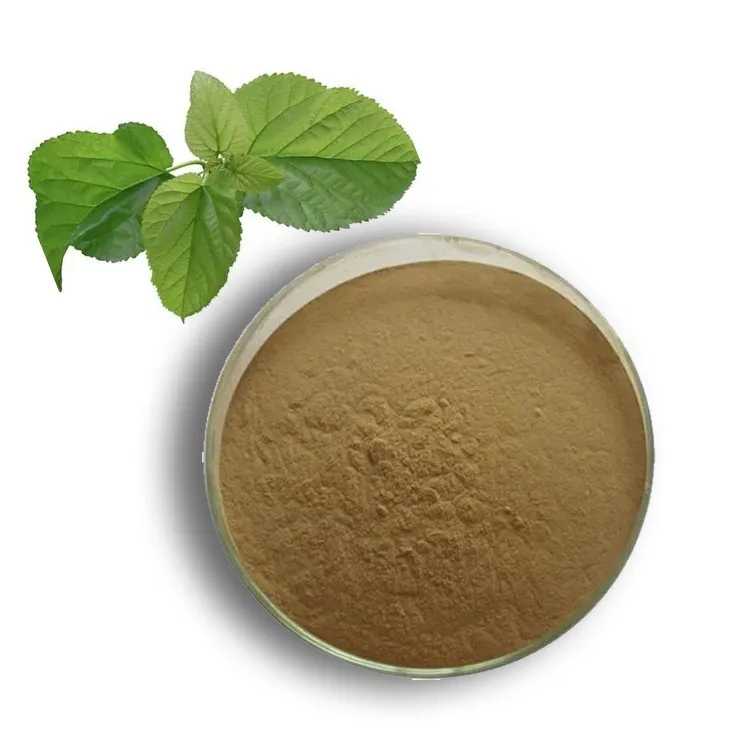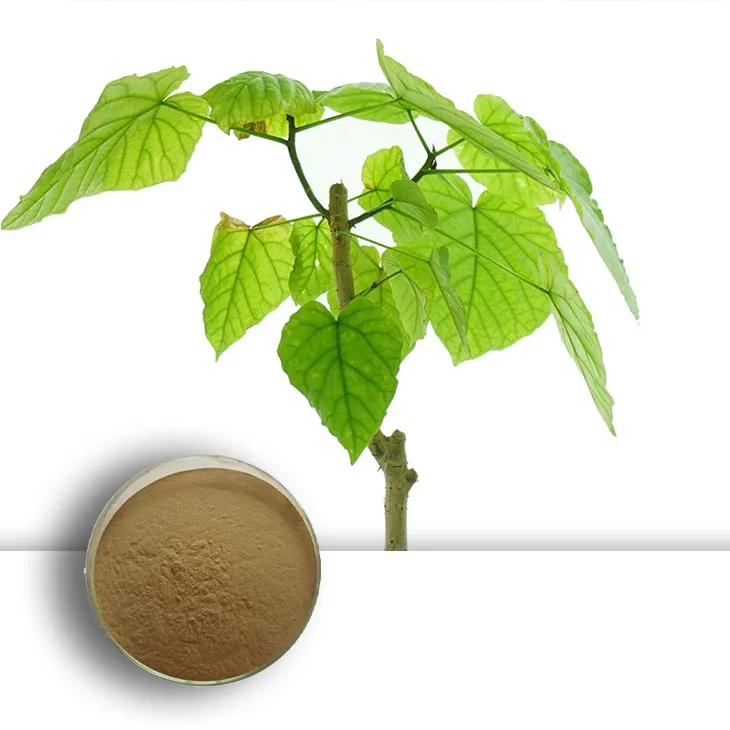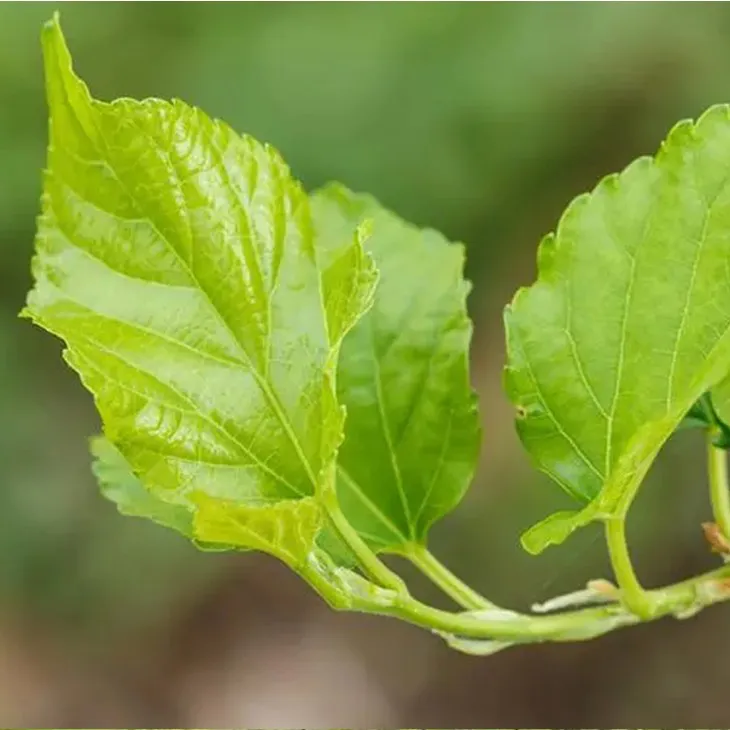- 0086-571-85302990
- sales@greenskybio.com
The best method for extracting mulberry leaf extract.
2024-11-27

1. Introduction
Mulberry leaves have been used in traditional medicine for centuries, and their extracts are known to possess various beneficial properties. Extracting Mulberry leaf Extract efficiently and effectively is crucial for obtaining its valuable components. This article aims to explore the best methods for this extraction process, considering different techniques and factors that influence it.

2. Importance of High - Quality Mulberry leaf Extract
The Mulberry leaf Extract is rich in bioactive compounds such as flavonoids, alkaloids, and polysaccharides. High - quality extract is essential for several reasons:
-
Medicinal Applications: It has potential in treating diabetes, as some components may help regulate blood sugar levels. For example, 1 - deoxynojirimycin (DNJ) found in mulberry leaves is known for its anti - diabetic properties.
-
Cosmetic Use: Flavonoids in the extract can act as antioxidants, protecting the skin from oxidative stress and premature aging. They can also be used in anti - inflammatory skincare products.
-
Nutritional Supplements: The extract can be a source of various nutrients and bioactive substances, which can be added to dietary supplements to promote overall health.

3. Extraction Techniques
3.1 Solvent Extraction
Solvent extraction is one of the most commonly used methods for obtaining mulberry leaf extract.
-
Choice of Solvent: Different solvents can be used, such as ethanol, methanol, and water. Ethanol is a popular choice as it can effectively dissolve many of the bioactive compounds in mulberry leaves while being relatively safe and easy to handle. For example, a study showed that using 70% ethanol solution could extract a high amount of flavonoids from mulberry leaves.
-
Extraction Procedure: The mulberry leaves are first dried and ground into a fine powder. Then, the powder is mixed with the selected solvent in a suitable ratio, usually around 1:10 to 1:20 (leaf powder to solvent). The mixture is then stirred continuously for a specific period, typically several hours at room temperature or with mild heating. After that, the mixture is filtered to separate the extract from the solid residue.
3.2 Supercritical Fluid Extraction (SFE)
Supercritical fluid extraction is a more advanced technique.
-
Principle: In SFE, a supercritical fluid, usually carbon dioxide (CO₂), is used as the extracting agent. CO₂ becomes supercritical at specific temperature and pressure conditions (around 31.1 °C and 73.8 bar). In this supercritical state, it has properties similar to both a gas and a liquid, allowing it to penetrate the plant material easily and dissolve the target compounds selectively.
-
Advantages: One of the main advantages of SFE is that it is a relatively clean process as CO₂ is non - toxic, non - flammable, and leaves no solvent residue in the final product. Moreover, it can be controlled precisely by adjusting the temperature and pressure, enabling the extraction of specific compounds with high purity.
-
Limitations: However, the equipment for SFE is expensive, which may limit its widespread use in small - scale operations. Also, the extraction efficiency may be lower for some compounds compared to solvent extraction methods.
3.3 Microwave - Assisted Extraction (MAE)
Microwave - assisted extraction is a relatively new and efficient method.
-
How it Works: In MAE, the mulberry leaf sample is placed in a microwave - transparent container along with the solvent. Microwave irradiation is then applied. The microwaves cause rapid heating of the solvent - sample mixture due to the interaction of the electromagnetic field with the polar molecules of the solvent. This rapid heating leads to an increase in the extraction rate as it enhances the mass transfer of the bioactive compounds from the leaf matrix to the solvent.
-
Benefits: MAE can significantly reduce the extraction time compared to traditional solvent extraction. For instance, some experiments have shown that MAE can complete the extraction process in just a few minutes, while solvent extraction may take hours. Additionally, it can also improve the extraction yield of certain compounds.
-
Challenges: One challenge with MAE is that it requires careful control of the microwave power and irradiation time. Over - exposure to microwaves can lead to the degradation of some bioactive compounds, thus affecting the quality of the extract.

4. Factors Influencing the Extraction Process
4.1 Particle Size of Mulberry Leaves
The particle size of the mulberry leaves has a significant impact on the extraction efficiency.
-
Smaller Particles: When the leaves are ground into smaller particles, the surface area available for solvent interaction increases. This allows for a more efficient extraction as the solvent can more easily access the interior of the leaf material where the bioactive compounds are located. For example, if the leaves are coarsely ground, the extraction may be incomplete as the solvent may not be able to penetrate deep into the larger particles.
-
Optimal Particle Size: However, if the particles are too fine, it may cause problems during the filtration process as they can clog the filter. An optimal particle size range is usually between 40 - 60 mesh, which provides a good balance between extraction efficiency and ease of filtration.
4.2 Solvent - to - Material Ratio
The ratio of solvent to mulberry leaf material also plays an important role.
-
Higher Solvent Ratio: A higher solvent - to - material ratio generally leads to better extraction results as there is more solvent available to dissolve the bioactive compounds. For example, a ratio of 1:20 (leaf material to solvent) may extract more compounds compared to a ratio of 1:10. However, using too much solvent can also increase the cost and the volume of the extract that needs to be further processed.
-
Optimal Ratio: Finding the optimal ratio depends on the type of solvent, the extraction technique, and the target compounds. In most cases, a ratio in the range of 1:10 to 1:20 is considered suitable for solvent extraction methods.
4.3 Extraction Time and Temperature
Both extraction time and temperature are crucial factors.
-
Extraction Time: Longer extraction times can increase the yield of the extract up to a certain point. However, after a certain duration, the extraction rate may plateau as most of the extractable compounds have already been dissolved. For solvent extraction, extraction times usually range from 1 - 6 hours, depending on the type of solvent and the target compounds. In microwave - assisted extraction, the time can be much shorter, usually within minutes.
-
Extraction Temperature: Temperature affects the solubility of the bioactive compounds and the rate of mass transfer. Higher temperatures can generally increase the solubility and extraction rate. But, if the temperature is too high, it can cause the degradation of some heat - sensitive compounds. For example, in solvent extraction with ethanol, a temperature in the range of 40 - 60 °C is often used to balance extraction efficiency and compound stability.
5. Comparison of Different Extraction Methods
Each extraction method has its own advantages and disadvantages, and the choice of method depends on various factors such as the scale of production, the target compounds, and the cost - effectiveness.
| Extraction Method | Advantages | Disadvantages | |
|---|---|---|---|
| Solvent Extraction |
|
|
|
| Supercritical Fluid Extraction |
|
|
|
| Microwave - Assisted Extraction |
|
May cause degradation of some compounds |
|
6. Conclusion
In conclusion, the optimal method for extracting mulberry leaf extract depends on multiple factors. For small - scale operations or when cost is a major concern, solvent extraction may be a suitable choice. However, for high - quality, pure extracts with no solvent residue requirements, supercritical fluid extraction could be considered, despite its higher equipment cost. Microwave - assisted extraction is a good option when short extraction times are desired, but proper control of parameters is essential to avoid compound degradation. Future research may focus on improving the efficiency and cost - effectiveness of these extraction methods, as well as exploring new techniques to better harness the potential of mulberry leaf extract.
FAQ:
What are the common extraction techniques for mulberry leaf extract?
Some common extraction techniques for mulberry leaf extract include solvent extraction, such as using ethanol or water as solvents. Supercritical fluid extraction is also an option, which often uses supercritical carbon dioxide. Maceration and Soxhlet extraction are traditional methods that can be employed as well. Each method has its own advantages and disadvantages in terms of extraction efficiency, cost, and the quality of the final extract.
What factors can influence the extraction of mulberry leaf extract?
Several factors can influence the extraction process. The type of solvent used is crucial as it affects the solubility of the active compounds in the mulberry leaves. Temperature also plays a role; higher temperatures may increase the extraction rate but could also potentially degrade some of the sensitive compounds. The particle size of the mulberry leaves matters, with smaller particles generally providing a larger surface area for extraction. Extraction time is another factor; longer extraction times may lead to a higher yield but may also introduce impurities. Additionally, the ratio of solvent to sample can impact the extraction efficiency.
Why is it important to obtain high - quality mulberry leaf extract?
Obtaining high - quality mulberry leaf extract is important for several reasons. High - quality extract is more likely to contain a higher concentration of the bioactive compounds present in mulberry leaves, such as flavonoids and alkaloids. These bioactive compounds are associated with various health benefits, including antioxidant, anti - diabetic, and anti - inflammatory properties. In the case of using the extract in the pharmaceutical or nutraceutical industries, high - quality extract ensures the effectiveness and safety of the products. Moreover, for research purposes, high - quality extract provides more accurate results when studying the properties and functions of mulberry leaf components.
How can one determine the quality of mulberry leaf extract?
The quality of mulberry leaf extract can be determined through several methods. One way is to analyze the content of specific bioactive compounds using techniques like high - performance liquid chromatography (HPLC) or gas chromatography - mass spectrometry (GC - MS). The purity of the extract can also be evaluated, for example, by checking for the presence of contaminants or impurities. Physical properties such as color, odor, and solubility can give some indication of the quality. Additionally, biological assays can be carried out to assess the biological activity of the extract, which is related to its quality in terms of the presence of active components.
Are there any environmental considerations in the extraction of mulberry leaf extract?
Yes, there are environmental considerations in the extraction process. For solvent - based extraction methods, the choice of solvent can have environmental implications. Solvents that are toxic or non - biodegradable can pose a threat to the environment if not properly managed. Additionally, the energy consumption during the extraction process, especially for methods that require high temperatures or pressure, can contribute to carbon emissions. Therefore, efforts should be made to choose more environmentally friendly solvents and optimize the extraction process to reduce energy consumption.
Related literature
- Efficient Extraction and Characterization of Bioactive Compounds from Mulberry Leaves"
- "Optimization of Mulberry Leaf Extract Production: A Review"
- "Mulberry Leaf Extract: Extraction Techniques and Potential Applications"
- ▶ Hesperidin
- ▶ citrus bioflavonoids
- ▶ plant extract
- ▶ lycopene
- ▶ Diosmin
- ▶ Grape seed extract
- ▶ Sea buckthorn Juice Powder
- ▶ Beetroot powder
- ▶ Hops Extract
- ▶ Artichoke Extract
- ▶ Reishi mushroom extract
- ▶ Astaxanthin
- ▶ Green Tea Extract
- ▶ Curcumin Extract
- ▶ Horse Chestnut Extract
- ▶ Other Problems
- ▶ Boswellia Serrata Extract
- ▶ Resveratrol Extract
- ▶ Marigold Extract
- ▶ Grape Leaf Extract
- ▶ blog3
- ▶ blog4
-
Bulk purchase of mulberry leaf extract.
2024-11-27
-
Wholesale Suppliers of Eyebright Extract.
2024-11-27
-
Certified organic jujube extract.
2024-11-27
-
The Most Worth - Buying Pure L - Cysteine.
2024-11-27
-
Organic Lily Extract, Australia.
2024-11-27
-
The pure moringa powder most worth buying.
2024-11-27
-
Yellow Pine Extract
2024-11-27
-
Alisma Extract
2024-11-27
-
Aguaje Extract
2024-11-27
-
Andrographis Paniculata Extract Powder
2024-11-27
-
Red Vine Extract
2024-11-27
-
Almond Extract Powder
2024-11-27
-
Angelica sinensis extract
2024-11-27
-
Polygonum multiflorum extract
2024-11-27
-
Saffron Extract Powder
2024-11-27
-
Marigold Extract
2024-11-27





















